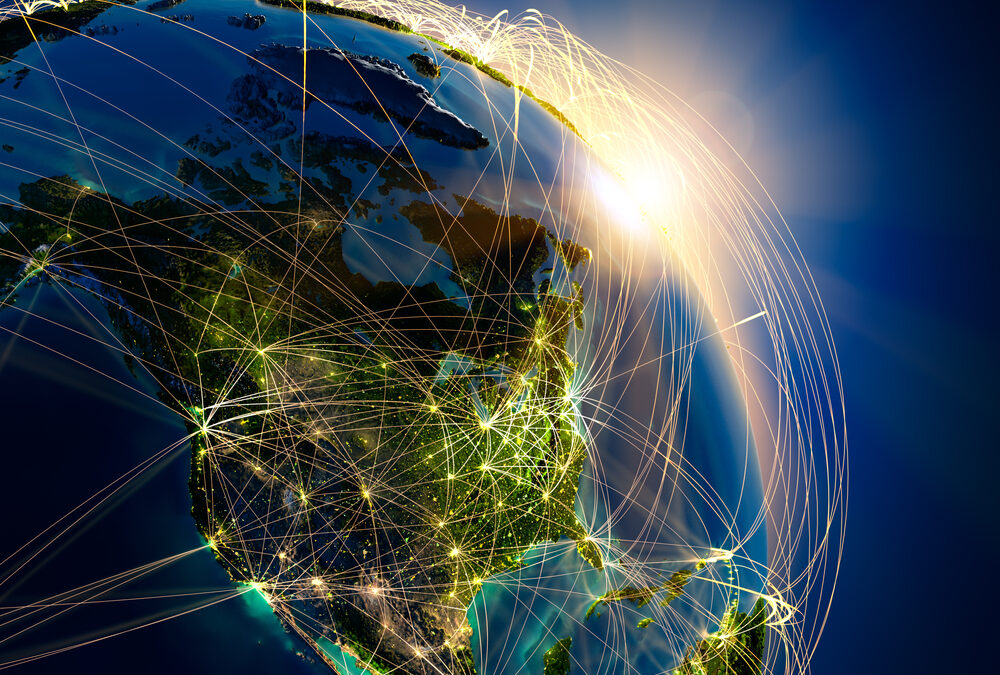There is certainly no shortage of buzz surrounding the Internet of Things. Thanks to sharp declines in the costs of sensing technology and data processing, we saw momentum grow more last year than ever before. According to Harbor Research, some 4.3 billion new devices (excluding laptops and PCs) were connected to the Internet in 2015 alone. But for all the blinding spew of headlines and news events, we’re missing the deeper implication for connecting these billions of devices.
After all, the Internet of Things isn’t about the things (i.e. the sensors); it’s about the vast and wide-sweeping value constructs sensors and the data they emit, enable. To understand these implications, let us begin with the sensor and zoom outwards…
This post was originally posted on TechTarget’s IoTAgenda site. The original post can be accessed directly here.
IoT is about visibility. When we connect a sensor to something (e.g. a fitness tracker, a cow, a car, a streetlamp, and so on,) we thereby give it a data stream and thus context. By monitoring some variable of its existence— temperature, location, pressure, frequency of interaction— we gain visibility into its nature and a frame of reference for its function with an environment. For example, if we add sensors to packaged meat, we suddenly have the potential to gain visibility into such variables as:
- Movement: The origin (e.g. location, time, date of initial packaging); where and when the meat is scanned as it moves from farm to distribution center to grocery and beyond.
- Environment: The ‘state’ of the meat as it moves through time and space, with particular emphasis on the variables that may impact its quality and health (e.g. temperature, pressure, contamination, changes in state, etc.)
- Actors: Those entities with whom the piece of meat has some interaction, from the individual packaging the meat at the farm, to the transporter, to the individual stocking the meat in-store, even to the purchaser.
The point here is not that we’re adding a sensor to packaged meat, but rather that by doing so, we gain visibility into the movement, forces, interactions, and environment which impact the meat and its movement through the value chain.
IoT is about new services enabled. The visibility and context enabled through sensors is powerful, transformative even. But it’s only part of the story. When we add sensors and connectivity to objects and products, we can interact with them. This allows the function of a product to transcend the product itself and enable entirely new service layers.
A good example of this can be found in a connected lightbulb. A smart lightbulb isn’t merely about the ability to turn the bulb on and off from a mobile app, nor is it only about significant increases in energy conservation, although these are extremely important. A smart light bulb is about enabling new services through the interactions of the product itself, wherein the lightbulb serves as an dynamic source of real-time data that informs new opportunities.

Image Courtesy: www.gooeee.com
Gooeee, a platform connecting lighting OEMs has outfitted a bulb with sensors, embedded processors, and Bluetooth connectivity to monitor temperature, humidity, ambient vs. color-tuning light, energy consumption, nearby motion, foot traffic, and LED performance. The environmental, workforce, and asset intelligence these lightbulbs enable translate to new ‘value-added’ offerings for lighting manufacturers, including but certainly not limited to:
- Preventative maintenance
- Predictive maintenance
- Energy management and conservation
- Security services
- Automated control
- Performance reporting and analytics
- Occupancy detection and traffic monitoring
- Customer experience personalization and product engagement
- Interoperability with other RFID, GPS, mobile, beacon, or connected nodes
What this means is that product-centric companies must now think beyond the physical form of the product and consider how the function, visibility, and interactions of/with the product create new value. This is, understandably, a fundamental hurdle for traditionally product-centric organizations to overcome. After all, if the focus shifts beyond the product, product manufacturers and retailers must consider significant modifications or entirely new business models.
IoT is about the ecosystems. As we zoom out from sensors and connectivity, even from services enabled by any single product, what we find is that the greatest implications (and disruptions) the Internet of Things promises exist at the ecosystem level. While businesses have been incorporating data and electronic intelligence into their models for years, IoT ushers in an era where digital information becomes the core business asset. New services enabled by connected products break down historically silo’d industries and stakeholders and connect value chains in ways that are, at first, difficult to conceptualize, or threatening to existing models.

Source: Harbor Research
Because this era-defining sea change involves a sweeping paradigm shift from human-centric computing to ubiquitous sensor and machine-centric computing, we call it “the Ubiquity Shift.” To understand the ecosystem of a [connected] thing is to understand its broadest ecology and how to design a Smart System around that ecology. Consider the ecosystem participants in the example of packaged meat:
- Farmer, cow, manufacturers of processing and packaging equipment
- Distributors, merchandising controllers, transporters
- Wholesalers, retailers, groceries, scanners, shoppers
- Restaurants, diners, health inspectors
- Waste collectors, landfills, environmental inspectors
How do data and information impact these entities? How do these data and relationships enable entirely new modes of business? How can information platforms enable real-time value for diverse ecosystem players? Organizations must identify the dynamics between the diverse entities involved across the entire value chain, including technology suppliers, OEMs, integrators, retailers, brands, agencies, developers, end users, consumers, and so on. As the economy continues to evolve towards networked business and collaboration models, understanding IoT through the ecosystem lens will separate the trend followers from the true innovators and disruptors.

